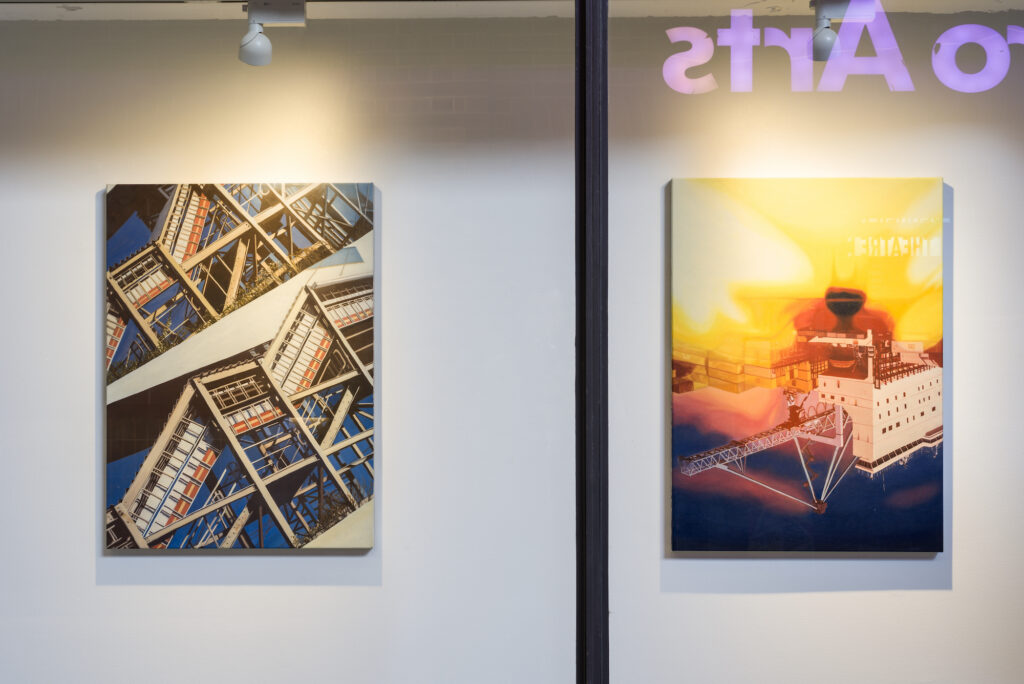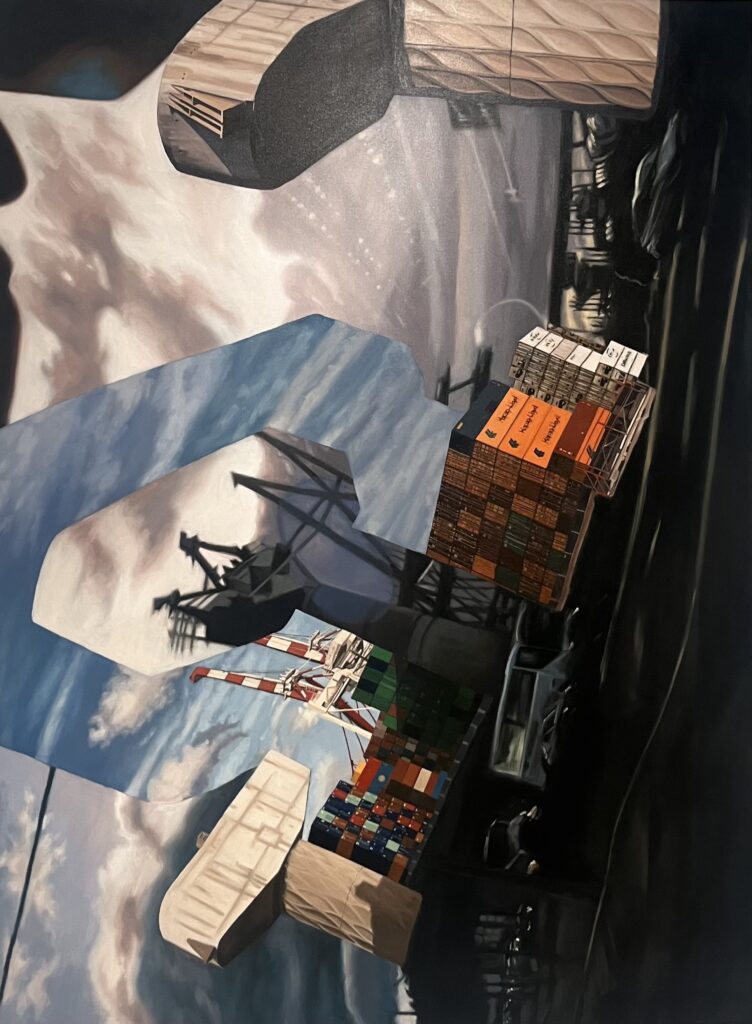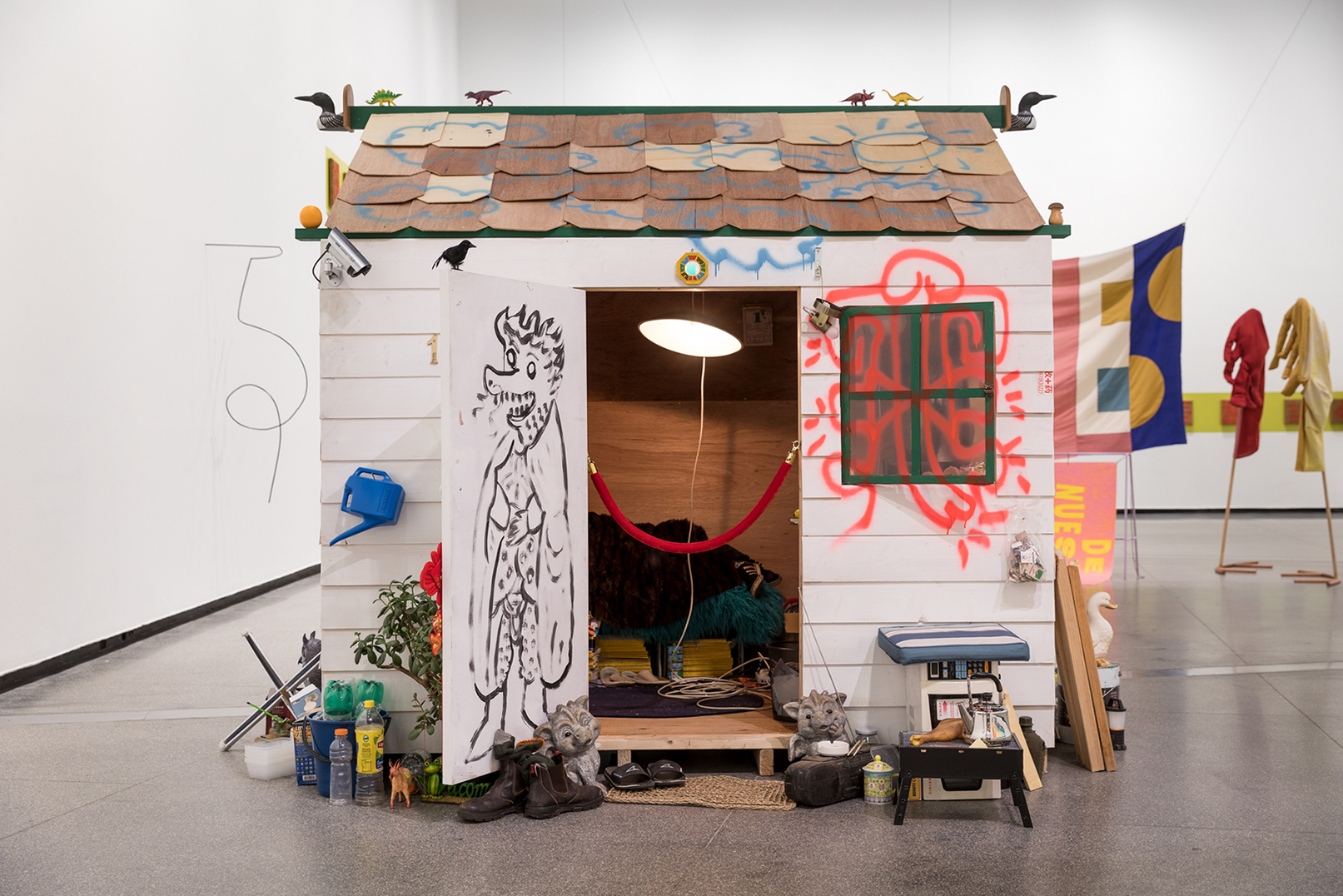
In 2020, Ann Debono produced a body of work called Diachronic.1 These works are some of my absolute favourite paintings and, much like a secret admirer, I have enthusiastically watched Debono’s practice. What I love most about the Diachronic series is the qualities of the absurd and the fantastical that Debono folds into realism. The latter is rendered illogically with technical mastery. In one painting, a packet of motta buondi cake snacks float upwards towards the firmament; in another, eyes are used as markers of time on the face of a clock; and throughout most, objects are reflected and refracted in glassy surfaces. The works are strange yet endearingly beautiful.
Debono lives and works in Naarm. As such her work is exhibited regularly at a distance in the southern state. So, it was with great delight that I learnt of her current exhibition, Bypass Blue Abyss, on at Metro Arts in Meanjin, Brisbane throughout May.
Since the artist’s residency at The British School (BSR) in Rome almost six years ago, Debono has slowly shifted her focus from the relics and ruins of Italy to industrial sites in her home city. Themes of urban development feature throughout the works of Bypass Blue Abyss, which are based on the construction of the West Gate Bypass Flyover. Debono has extensively documented the evolution of the site over a two year period. She describes it as a “massive, spectacular sculpture: intensely synthetic and ahuman, animated by vehicles and machinery; trains, lorries, cars, loading cranes, construction machinery and container ships.”2
Inside a small white room, six mid-sized paintings depict imagery of this ‘major road project’ from a multitude of perspectives. Scenes of the development are layered, cropped, and partially erased to reveal other scenes, while isolated objects of infrastructure and machinery are mirrored, flipped, and repeated. Debono explores the paradoxical condition of capturing, losing, and emphasising visual information, and the result is (intentionally) disorientating.

For example, her painting Portico (2023) features cars driving along the West Gate Freeway at dusk. The sky is filled with grey clouds and the road is lined with cars, buses, and trucks passing by in a blur. Lines on the road begin to wobble and large concrete pillars from the overpass stand erect in the background. The central section of this industrial landscape has been erased to reveal another; where the sky is blue and the weather is fair. Stacks of multi-coloured shipping containers fill the Port of Melbourne. Two red and white striped container cranes stand proudly behind them. By collaging two separate scenes, at different times of the day, into this singular work, Debono creates a sense of duration, highlighting the ongoing and transformative activity of the site.

Bypass blue abyss (2024) is a vertiginous composition, looking up toward the heavens. The skeletal structure of the bypass in mid construction, disturbs the spatial infinity of the sky. Scaffolding supports curving sections of elevated road that are yet to connect and machinery in the bottom right of the canvas lifts pieces of the bypass that appear to be the missing pieces of the puzzle.
Debono’s de/reconstruction of the built environment reminds me of Gordon Matta-Clark’s principles of anarchitecture:
Completion through removal. Abstraction of surfaces. Not-building, not-to-rebuild, not-built-space. Creating spatial complexity reading new openings against old surfaces. Light admitted into space or beyond surfaces that are cut. Breaking and entering. Approaching structural collapse, separating the parts at the point—the point of collapse.
However, rather than using these principles to critique gentrification, like Matta-Clark, Debono examines the changes in our built environment that are driven by a growing population, increased consumption, economic growth, and society’s demand for continual expansion.
Some of these industrial landscapes are harsh and austere. Debono’s primary-coloured palette feels jarring. The shapes are angular and sharp. I can almost feel the uncomfortable rays of the sun coupled with the heat of this machinery, warming the surrounding metal and concrete infrastructure. This is particularly evident in Iris (2023), on display in the front window of the gallery. In this work, an upside down wharf full of cargo appears half-scorched and engulfed in a visible heat haze.
I miss the soft and romantic qualities of her earlier work, which featured the grand architectural spaces, plants, artefacts, and antiques of her overseas travels. Nevertheless, I’m curious about Debono’s determination to document these areas of development, growth, and expansion in Australia, and I’m left wondering what they suggest about the values, priorities and direction of contemporary culture.
- “Ann Debono: Diachronic: 21 November–19 December 2020,” Sutton Gallery, accessed 12 May 2024. ↩︎
- “Bypass Blue Abyss,” Metro Arts, accessed 12 May 2024. ↩︎
Gabrielle Bergman is an early-career curator, art historian and writer based in Meanjin / Brisbane. She is currently working as a Curatorial Assistant at the Museum of Brisbane.



